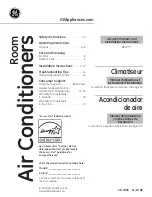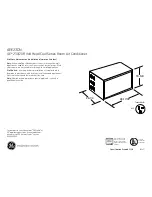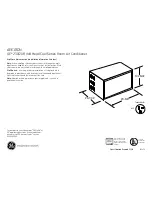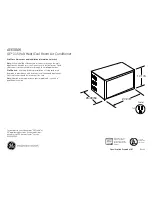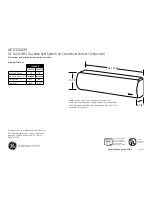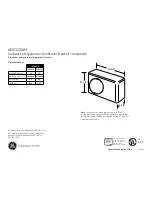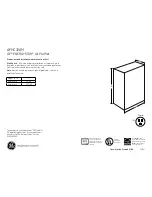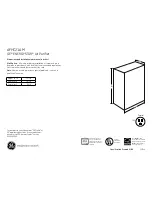
-
33
-
1.1.6 MAINTENANCE DATA
(1)
Troubleshooting procedures for electrical equipment
(a)
Cautions
1
If you are disassembling and checking an air conditioner, be sure to turn off the power before beginning. When working on
indoor units, let the unit sit for about 1 minute after turning off the power before you begin work. When working on an outdoor
unit, there may be an electrical charge applied to the main circuit (electrolytic condenser), so begin work only after discharging
this electrical charge (to DC 10 V or lower).
2
When taking out printed circuit boards, be sure to do so without exerting force on the circuit boards or package components.
3
When disconnecting and connecting connectors, take hold of the connector housing and do not pull on the lead wires.
(b)
Items to check before troubleshooting
1
Have you thoroughly investigated the details of the trouble which the customer is complaining about?
2
Is the air conditioner running? Is it displaying any self-diagnosis information?
3
Is a power supply with the correct voltage connected?
4
Are the control lines connecting the indoor and outdoor units wired correctly and connected securely?
5
Is the outdoor unit’s refrigerant service valve open?
(c)
Troubleshooting procedure (If the air conditioner does not run at all)
If the air conditioner does not run at all, diagnose the trouble using the following troubleshooting procedure. If the air conditioner
is running but breaks down, proceed to troubleshooting step (d).
Important
When all the following conditions are met, we say that the air conditioner will not run at all.
1
The Run light does not light up.
2
The flaps do not open.
3
The indoor unit fan motors do not run.
4
The self-diagnosis display does not function.
YES
YES
YES
NO
NO
NO
NO
YES
Troubleshooting procedure (If the air conditioner does not run at all)
Is the correct voltage
connected for the power
supply?
With the power off, do
the flaps open manually,
then close again when
the power is turned on?
Is there a reception
sound emitted from the
unit when it is operated
by the remote control?
Replace the indoor unit’s
circuit board and perform an
operation check.
Make sure the cor rect
voltage is connected, then
perform an operation check.
Is the current fuse on the
indoor unit’s board blown?
Proceed to the indoor unit
circuit board check.
Proceed to the wireless remote
c o n t r o l t r o u b l e s h o o t i n g
procedure.
If the package components
are not damaged, replace
the fuse and perform an
operation check again.
* If the voltage is correct, it will be
within the following voltage range.
198 ~ 242 V
Summary of Contents for SRK10CES
Page 2: ...TECHNICAL MANUAL...
Page 204: ...202 MEMO...
Page 213: ...211...
Page 227: ...225...
Page 233: ...231...
Page 236: ...CRBE0226 1 3 4 2 5 6 7 8 9 10 11 12 13 PANEL FAN ASSY 234...
Page 244: ...CRBE0228 9 15 7 8 1 2 4 5 6 12 13 14 10 11 3 PANEL FAN ASSY 242...
Page 248: ...CRBE0227 11 15 16 1 2 3 5 6 7 8 9 12 13 14 4 10 PANEL FAN ASSY 246...
Page 252: ...CRBE0221 12 16 17 1 2 3 5 6 7 8 9 10 13 16 14 15 4 11 PANEL FAN ASSY 250...
Page 256: ...05 0 CRBE0224 2 1 5 16 3 9 11 12 4 7 8 6 6 17 17 10 13 15 14 PANEL FAN ASSY 254...
Page 260: ...2005 ROOM AIR CONDITIONING TECHNICAL HANDBOOK...


































